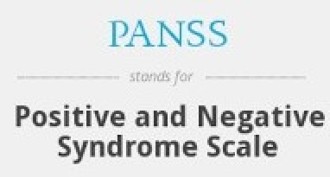The Positive and Negative Syndrome Scale (PANSS) is a medical scale used to measure the severity of the symptoms of patients with schizophrenia.
Issued in 1987 by Stanley Kay, Lewis Opler and Abraham Fiszbein. It is widely used in the study of antipsychotic therapy. The scale is known as the "gold standard" to be followed by all assessments of psychotic behavioral disorders.
Positive and Negative Syndrome Scale (PANSS) refers to the two types of symptoms in schizophrenia as defined by the American Psychiatric Society: positive symptoms that refer to excess or distortion of normal functions (eg hallucinations and delusions) and negative symptoms represent a reduction or loss of normal functions.
Some of these functions that can be lost include normal thoughts, energies, the ability to separate fantasies from reality and the ability to correctly express emotions.
PANSS is a relatively brief interview that requires 45 to 50 minutes.

